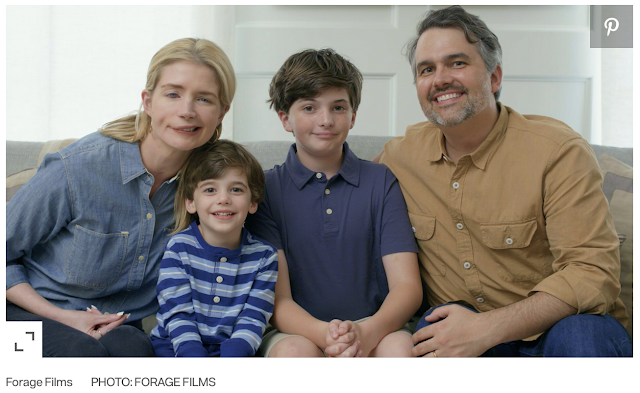"Home Modification and Living in Place" Podcast
Tonight I listened to the Glass Hall Full OT's podcast episode called "the Role of OT in Home Modification and Living in Place." On this episode, hosts Natalie and Jess were able to interview two founders of the Living in Place Institute, Louie and Erik, as well as an occupational therapist named Sabrena. I learned that the Living in Place Institute helps create interdisciplinary teams of experts of all kinds in order to create home modifications that allow clients to live as safely and independently as long as possible. The founders really emphasized that these home modifications are for ANY client of any age and of any condition. One of them explained how around 90% of people who move into retirement communities would actually rather stay home, and what's contradicting is that many retirement homes are not really built in a more accessible design anyways. Louie and Erik say that medical staff MUST help in designing home modification plans, because if they don't, non-medical designers have no idea what they're doing. And sadly, this happens a lot.
When it comes to talking to a client about making home modifications, Louie and Erik advise to start going through a list of what modifications needs to take place and why. Then, talk to them about what options are available in different cost perspectives. In addition, talk to them in terms of "other people" and how not making this change could affect their loved ones. Louie and Erik went on to give some examples of what the most popular home modification items are, and these include: grab bars, elevated height toilets, curveless zoo-entry showers, personal hygiene seats, and grab assist devices. They also gave insight into easy modifications that ALL clients should have installed, which include: LED lights (last longer, less need to replace), two handrails on stairways, emergency flashlights, first aid kits, and smoke detectors in every bedroom and on every floor. They also advise to remove throw rugs, as these increase the probability of tripping, and to change door knobs to "lever returns" to reduce the likelihood of being caught by the door. One interesting idea that they also suggested is to make sure the temperature of all faucets are no higher than 122 degrees, because children and elderly adults are more skin-sensitive and are more likely to be burned.
When it comes to occupational therapy, Louie and Erik said that the best way for OTs to learn more about home modification is to take some specialized training classes. They also advise OTs to meet the other interdisciplinary team members, such as reaching out to kitchen/bath associations in their specific area and become familiar with them. Louie and Erik believe everyone on the home modification interdisciplinary team is important, especially those with a medical background like OTs.
It was incredibly interesting for me to listen to this podcast and gain insight on home modifications for "Living in Place." I actually went over to the Living in Place website to try and "find a CLIPP (Certified Living in Place Professional) professional near you" and surprisingly there are only two in the state of Tennessee; one in Nashville, and one in Sparta. It does seem like there should be one the city of Memphis, so maybe one day I will receive my certification to be a CLIPP!
When it comes to talking to a client about making home modifications, Louie and Erik advise to start going through a list of what modifications needs to take place and why. Then, talk to them about what options are available in different cost perspectives. In addition, talk to them in terms of "other people" and how not making this change could affect their loved ones. Louie and Erik went on to give some examples of what the most popular home modification items are, and these include: grab bars, elevated height toilets, curveless zoo-entry showers, personal hygiene seats, and grab assist devices. They also gave insight into easy modifications that ALL clients should have installed, which include: LED lights (last longer, less need to replace), two handrails on stairways, emergency flashlights, first aid kits, and smoke detectors in every bedroom and on every floor. They also advise to remove throw rugs, as these increase the probability of tripping, and to change door knobs to "lever returns" to reduce the likelihood of being caught by the door. One interesting idea that they also suggested is to make sure the temperature of all faucets are no higher than 122 degrees, because children and elderly adults are more skin-sensitive and are more likely to be burned.
When it comes to occupational therapy, Louie and Erik said that the best way for OTs to learn more about home modification is to take some specialized training classes. They also advise OTs to meet the other interdisciplinary team members, such as reaching out to kitchen/bath associations in their specific area and become familiar with them. Louie and Erik believe everyone on the home modification interdisciplinary team is important, especially those with a medical background like OTs.
It was incredibly interesting for me to listen to this podcast and gain insight on home modifications for "Living in Place." I actually went over to the Living in Place website to try and "find a CLIPP (Certified Living in Place Professional) professional near you" and surprisingly there are only two in the state of Tennessee; one in Nashville, and one in Sparta. It does seem like there should be one the city of Memphis, so maybe one day I will receive my certification to be a CLIPP!

Comments
Post a Comment